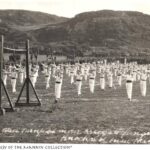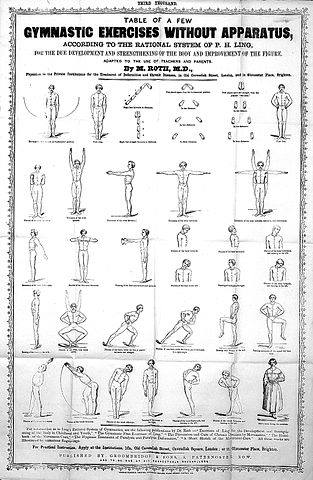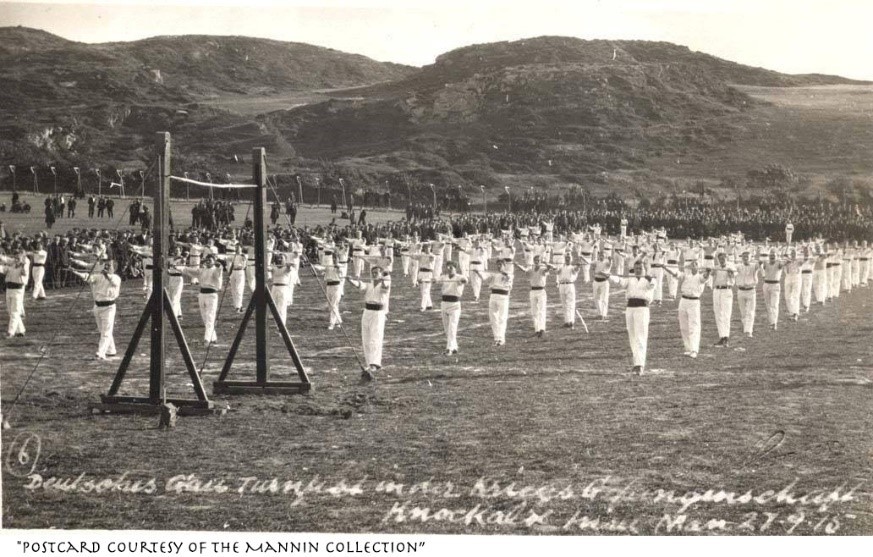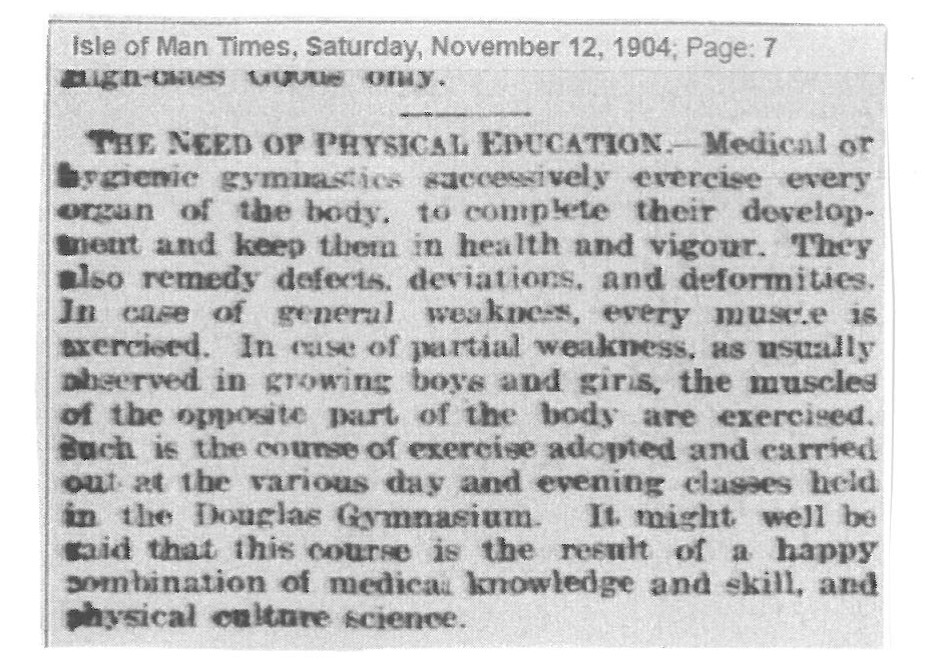Issue #361 – Wednesday, March 2, 2022
Pilates History – Pehr Ling and Knockaloe Camp
by Jonathan Grubb
There are many references in Knockaloe Camp newspapers to ‘free exercises’ being performed at the Camp and usually these references describe parts of gymnastic festivals which were held there.
Free exercises are more than likely to be the ‘gymnastic free exercises’ or a variation of those exercises devised by Pehr Ling, a Swedish-born pioneer of physical education (born in 1776 and died in 1839) who is regarded by some as the father of modern physiotherapy.
Ling’s free exercises were designed to strengthen, stretch and improve the body without using any apparatus. As well as free exercises Ling also promoted ‘medical gymnastics’, which were already in use on the Isle of Man as described in a local newspaper of 1904. The article can be read below, which states that amongst other listed benefits, practising medical gymnastics (also referred to as ‘hygienic gymnastics’) “remedy defects, deviations and deformities. In case of general weakness every muscle is exercised in the body.”
Civilian and Army doctors and medical staff would have known about these methods and perhaps gave Joseph Pilates the encouragement to work with hospitalised internees using his own ideas and techniques. In an interview with Doris Hering for ‘Dance Magazine’ in February 1956, Pilates is quoted as having “encountered people who were disabled as a result of wartime diseases and incarceration. He began devising machines to help in their rehabilitation.”
There were 200 to 350 beds at Knockaloe Camp with metal springs, referred to in the day as ‘iron combination bedsteads’ (sourced from a notification of an auction of the sale of items from the Camp in Manx newspaper ‘s dated June 1919 and September 1919 (See also my post of 6th March 2019). Generally, the internees had wooden boarded beds in the huts where they were housed, however there are photographs and documents evidencing ‘combination beds’ were used in the sub-camp hospitals, of which there were 5 at Knockaloe. Each hospital had 7 to 10 paid orderlies and it is believed that Joseph is likely to have been one of these orderlies. However to date we have no conclusive evidence of exactly how extensively Joseph was able to test and put into practice the machines he said he began to devise to help in rehabilitation during his time at Knockaloe. We know he was motivated to devise these machines for the people he encountered at the Camp who were disabled as a result of wartime diseases and incarceration and it is clear he was inspired to incorporate the use of springs on the metal beds where they were being treated. It is also clear from a conversation I had with Lolita San Miguel in 2015 that Joseph expressed directly to Lolita that he was very grateful for his time at Knockaloe as it gave him time to “work on his method”. After his release from the Camp in 1919 at the end of the War Pilates spent his next 6 years in Germany further developing his techniques and machines and his time there included assisting the Hamburg police in physical training. In 1925 when Hitler was gaining power in Germany and the police were being developed on a more military basis, Pilates emigrated to America and patented his “Universal Reformer™” initially in America but also in Europe. The development of his technique and machines continued throughout the rest of his lifetime as he and his partner Clara spent their remaining years promoting the method and use of machines developed by Joseph and tailored exercises for each client who visited their studio in New York including many who were dancers from the New York ballet.
The photograph below shows a picture of a ‘Turnverein’ (Gymnastic festival) held at Knockaloe Camp on 27 September 1915, which was just 2 weeks after Joseph Pilates had arrived at the Camp. The accompanying sub-camp newspaper report is of this exact event and the following words are an extract from a report of the event which brings the photograph to life:
“The free exercises aroused the greatest interest. These were performed during the afternoon, in bright sunshine and before a large audience. The sight of almost 200 white-clad gymnasts, marching with musical accompaniment and fine bearing to then perform the free exercises was quite wonderful.”
These types of events would no doubt have been one of the sources of inspiration to Joseph Pilates during his time of internment.

Jonathan Grubb was born in England in 1962 and has lived on the Isle of Man since he was two years old. His great grandfather Jakob Grub was interned on the Isle of Man until 28 August 1919 in the same camp as Joseph Pilates.
In his younger days Jonathan was a keen amateur sportsman and particularly excelled at football (soccer), representing the Isle of Man in international games on numerous occasions. An anterior cruciate ligament injury sustained towards the end of his playing days led him to discover Pilates and he has been a passionate practitioner ever since. He has traveled to various countries to attend conferences and courses and been fortunate to be mentored by very experienced local teachers.
Having previously been an advanced instructor for several years in the Wu family style of tai chi chuan, Jonathan is currently studying to become a Pilates teacher with MKPilates and his teaching has been enthusiastically welcomed in classes throughout the island already. More on the story of Knockaloe Internment Camp can be found at knockaloe.imCheckout Jonathon’s Facebook page Joseph’s Legacy – Pilates 100 +!




